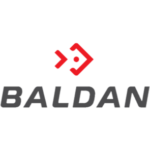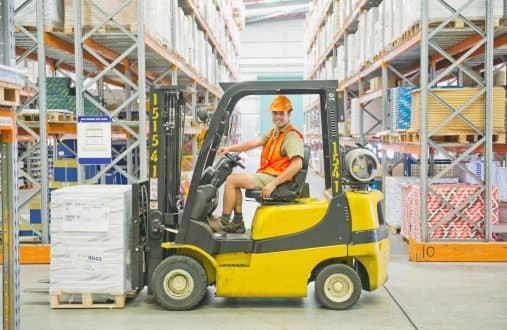What is material handling?
Also called “Internal Transport” the movement of materials refers to the movement of products within a small area. Within a factory, for example, this means all the movement in order to replace the raw material in the production line and transport it to different sectors or warehouses.
This movement should not only take into account the space and time in which the products was move, but the human aspect too. After all, however automated the operation, there will always be someone to command the movement of materials.
In an optimal view, the ideal is that all product movement being done safely, with low cost, accuracy and without damage to the material. To achieve this scenario that specific strategies, techniques and tools exist.
Benefits of optimizing material handling
– Cost Reduction
When using mechanical equipment for material handling, cost of labor are reduce. In addition, good internal logistics also reduces the loss of materials and the number of accidents.
– Increased Productive Capacity:
Good practices in material handling generate more speed throughout the production cycle, which will allow for an increase in production capacity. Rethinking the industrial layout taking advantage of all the available space also helps in this regard.
– Better Working Conditions
Optimizing forklift routes, for example, will ensure more safety and less “effort” for the worker, creating better working conditions.
– Best Distribution:
The reorganization of the industrial layout will improve the distribution of equipment, products and people in the operation. This will create a much more productive and pleasant environment to work.
Principles of Material Handling
Planning
The movement of materials must be the result of a studied and very well structured plan. The needs, objectives and methods must be define before any step.
A team of suppliers, consultants and managers, who need to know the company’s operation and strategic objectives very well, must develop good planning.
Standardization
The methods and equipment employed must have the least variety possible. This helps to create, in fact, an organized process to increase business efficiency.
The standardization also applies to loads, as the way all available equipment can meet the specified load.
It is important to not sacrifice flexibility in favor of standardization. In other words, it is necessary to balance these two points. For example, access to heights and traffic within the facility cannot be hamper by standardization.
Unitization
Unitizing a load means grouping it over a period to facilitate storage and movement, using pallets or containers, for example.
The handling of unitized loads facilitates the operator’s work, since it requires less effort and labor.
Work and Idle Time
Times and motions must be measured and studied. The mission is to reduce the execution time of each task as much as possible, in order to obtain the highest performance from the machines, increase production and, consequently, the profitability of the process.
Thus, all idle time must be eliminated. Unused equipment or an operator who needs to wait to perform a task are examples of waste.
Ergonomic Safety
Ergonomics is the science that studies the adaptation of working conditions to man’s activities. Thus, it is necessary to recognize and respect human limitations when designing movements within the factory.
The equipment must assist in eliminating repetitive movements and causing excessive work to operators. In addition, worker safety need to be on the agenda.
Space Use
This is the basic principle for a good material handling and storage system. The goal is to reach the maximum level in storage density, but it is important to think about issues such as accessibility and the ease of finding and selecting items.
Vertical occupations, made possible by forklifts, are great for getting the most out of the area, facilitating and organizing the flow of the place.
Integration
It is extremely important that all areas are involved and integrated in the material handling process. Thus, the operation on receipt, storage, production, inspection, packaging, shipping and transportation need to be understood deeply.
If you are able to apply integrated logistics, equipment and labor that are not use in a particular sector can be relocate to another, optimizing the process as a whole.
Automation
Through technology, several processes related to material handling can be automated or at least mechanized. The main objective is to streamline the operation, increase efficiency and reduce costs.
To understand what are the critical points that can be support by technology, it is important to analyze the pre-existing processes and identify where the biggest bottlenecks are. Then, check if it is possible to automate any process to eliminate these bottlenecks.
Environment
Energy consumption, waste generation and impact on the environment must be take into account when designing material handling.
Whenever possible, containers and pallets should be reuse or recycle after availability. Products considered “dangerous”, in turn, need extra attention to protect against leaks and other risks.
Life cycle
To understand how to optimize processes, it is important to analyze the cost of the material handling life cycle. This means all expenses between the first amount spent to select a method of movement until the total replacement of the method, parts or equipment.
It is important to include here also the expenses with predictive maintenance and general costs with maintenance and replacement of parts.
Technology in internal logistics
Technology is an essential part of optimizing transportation within the factory. To begin with, the use of the most modern equipment, such as forklifts and carts, will bring agility and safety to the operation.
WMS (Warehouse Management System) software assists in the entire logistics chain, allowing greater control over storage and inventory management.
Finally, it is possible to use RTLS systems (in the form of beacons or RFID, for example) to map the movement of your products and equipment within the factory. This helps to make better use of space, relocate teams or equipment and optimize routes.
How does Novidá assist in material handling?
Novidá has precisely a geolocation solution to monitor the movement of equipment, products or people within any environment. We distribute sensors throughout the plant and paste beacons (bluetooth emitting tags) into the resources that must be map.
In this way, we are able to indicate, in real time, the precise location of the object. This will help you to understand how forklifts move throughout the day, what is the route taken by the products, where are the largest concentration of equipment and people, among other insights.
With this information in the palm of the hand, the manager is able to find the main productivity bottlenecks, optimize their routes, ensure greater safety for operators and have full control over the movement of materials in the business.
We had better detail how we help large companies achieve an ROI of up to 189% in our successful cases from Gerdau and Renault, free download available.
















